East New York Tunnel, Brooklyn
The East New York Tunnel was dug in 1914 during the massive grade-crossing elimination project that elevated or submerged most of the Bay Ridge Line. The tunnel begins just south of Liberty Avenue and passes under the mess at Broadway Junction, including Atlantic Avenue, Fulton Street, Broadway, and Bushwich Avenue before running under the western edge of Evergreen Cemetery and emerging as an elevated line near the corner of Evergreen Avenue and Piling Street.
When the tunnel was created, a platform was built at the south portal between the two easternmost tracks for the East New York Station. The platform was accessed from a stairway leading down from Liberty Avenue over the face of the tunnel entrance. The platform still exists, although it is obscured by vegetation in the photo below.
A photo of the tunnel and platform from 1924 is available HERE.
If the BMT Canarsie Line were dropped into the right-of-way to share tracks with the Circumferential Line south of here, a design decision would need to be made whether to continue the line northward through the East New York tunnel or have it ascend again to the top platform at Broadway Junction. The easier (and cheaper) course of action would probably be to take the subway line up and leave the freight line in the tunnel. But the quieter option would be to use the tunnel and bore a transfer connection at Broadway Junction.
Just to the northeast of the portal to the East New York tunnel is a large abandoned red brick building. LIRR Substation 2 in East New York was one of the five substations built as part of the LIRR's first electrification project around 1905. The substation contained two or three rotary converters for converting 12,000-volt AC that came through from the power house to the 600 volt DC needed for the third rail. It also contained associated transformers, cooling blowers and buses. This was the first application of electricity for surface railroads in the eastern United States. The Hammel substation even contained a massive battery composed of of 300 large chemical tanks that had a 3,200 amp-hour rating and could run the Rockaway Beach Division from Howard for several hours in an emergency. The NY times has a reprint of a nice article on the electrification from 1905 HERE
I haven't been able to find any information online as to when the station was decommissioned or if there are any plans circulating for its demolition or renovation. It obviously has been vacant for some time, likely outmoded by the development of solid state rectifiers that don't need such a massive support facility.
The LIRR has a line on Atlantic Avenue that was originally built in 1836 by the Brooklyn & Jamaica Railroad Company and leased to the LIRR. The line ran between Jamaica and a terminal on the East River, although it was cut back to its present terminus at Flatbush Avenue in the 1870s after resolution of issues regarding the use of steam locomotives within the city of Brooklyn.
The East New York LIRR station is right above the East New York tunnel and if the tunnel platform were reactivated, transfer between the lines would be a fairly simple walk up/down a flight of stairs and across a street.

East New York Tunnel - south portal
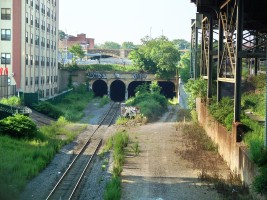
East New York Tunnel - south portal

Looking south from over the East NY tunnel portal. Note the abandoned platform on the left
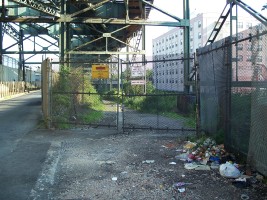
Access road gate down to the tracks
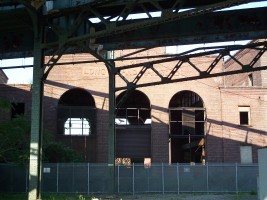
LIRR Substation Two - west side
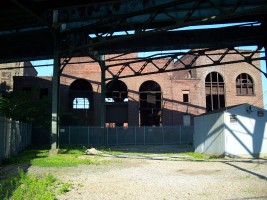
LIRR Substation Two - west side
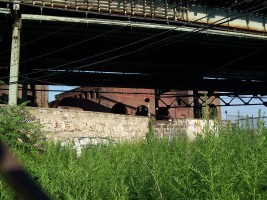
LIRR Substation Two viewed from Liberty Avenue
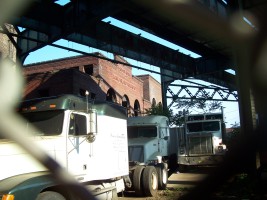
LIRR Substation Two viewed from the northwest
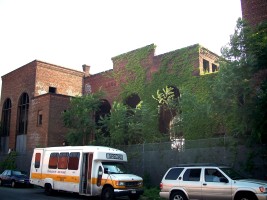
LIRR Substation Two - east side
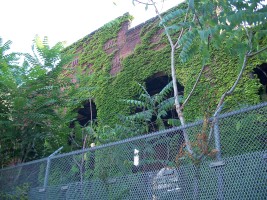
LIRR Substation Two
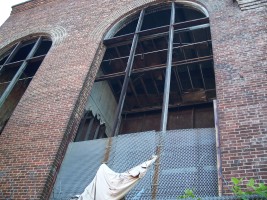
LIRR Substation Two
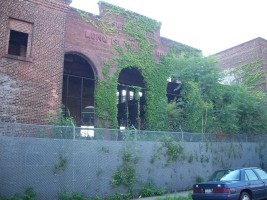
LIRR Substation Two
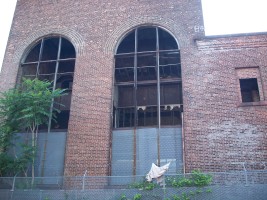
LIRR Substation Two
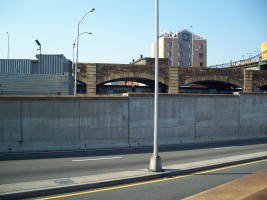
LIRR train on Atlantic Avenue coming from Flatbush Avenue
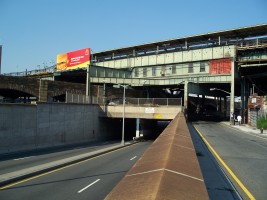
The BMT Canarsie Line, passing over the LIRR, passing over New York Avenue, passing over the East New York tunnel
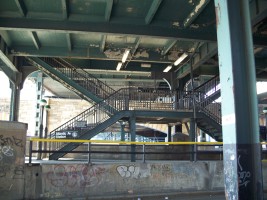
Stairway up to the BMT (L Train) station
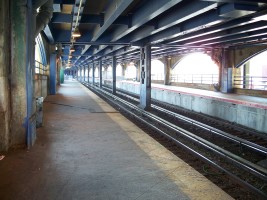
LIRR tracks under Atlantic Avenue
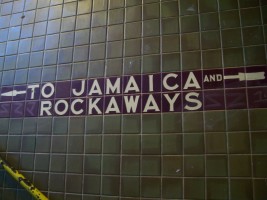
LIRR station tile sign

Unused ticket booth under tracks
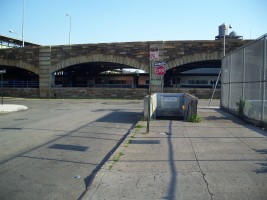
LIRR train under Atlantic Avenue - viewed from the north